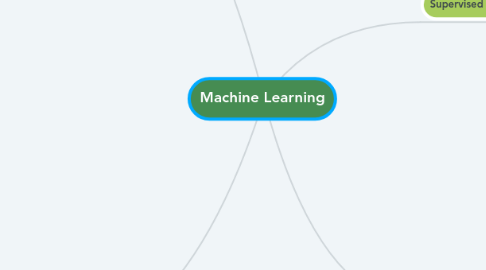
1. Semi-supervised Machine Learning
1.1. Think of this type as a hybrid between the two previously mentioned models. In most cases, this type of learning happens when you’ve got a large data set for (x), but only some of (y) is definitive and capable of being taught.
1.2. Semi-supervised machine learning can be used with regression and classification models, but you can also used them to create predictions.
2. What Marketers can Accomplish with Machine Learning
2.1. Marketing Automation Tools
2.1.1. Open Source Marketing Automation: Mautic
2.1.2. Best-in-Class Marketing Automation Software - Marketo
2.1.3. HubSpot | Inbound Marketing & Sales Software
2.2. Sending Frequency Optimization
2.2.1. Machine learning allows marketers to carve lists into precise segments and to neatly personalize sending frequencies for individual recipients.
2.3. Content Marketing
2.3.1. Machine learning can give you the intelligence needed to quickly determine what’s working as well as recommend what’s needed to amplify your strategies that might better connect with your audience.
2.3.2. The learning part of machine learning means that, over time, the machine becomes smarter.
2.4. Ad Platforms
2.5. Programmatic Display
2.5.1. Programmatic advertising allows marketers to take matters one step further by measuring and pivoting on advertising strategies in near real time.
2.6. AdWords Scripting
2.6.1. These Scripts often work as a form of supervised machine learning in many cases.
2.6.2. AdWords advertisers specify the input and the output determines the function. An algorithm connects the input to the output.
2.7. Predictive Analytics
2.7.1. Predictive analytics are used in many verticals and professions. Essentially, these analytics are models that help find and exploit patterns in data.
2.7.2. These patterns can then be used to analyze risks and opportunities.
2.8. Customer Churn
2.8.1. Keeping customers is as pivotal to growth as getting new customers.
2.8.2. Analytics can help understand behaviors that lead to customer churn and help marketers craft strategies to reverse churn.
2.8.3. Predicting customer churn is a valuable piece of this puzzle.
2.9. Computer Vision
2.9.1. Computer vision is exactly what the term sounds like — it’s how machines “see.”
2.10. Segment Comparison
2.10.1. Audience segmentation has always been an important part of advertising.
2.10.2. Knowing the members of your audience and where they’re coming from offers marketers incredibly valuable information.
2.10.3. Now marketers can create micro-segmentations as well as measure and compare how each segment reacts to different messages.
2.10.4. Google Analytics offers behavioral-based demographic data such as affinity groups for a user.
3. Supervised Machine Learning
3.1. supervised machine learning involves human interaction elements to manage the machine learning process.
3.2. The easiest way to understand supervised machine learning is to think of it involving an input variable (x) and an output variable (y). You use an algorithm to learn a mapping function that connects the input to the output. In this scenario, humans are providing the input, the desired output, and the algorithm.
3.3. Types
3.3.1. Classification
3.3.1.1. Classification problems use categories as an output variable. Example categories would be demographic data such as sex or marital status.
3.3.2. Regression
3.3.2.1. Regression problems are where the output variables are a real number. A common format of these types of problems are linear progressions.
3.3.2.2. Linear regression models determine the impact of a number of independent variables on a dependent variable (such as sales) by seeking a “best fit” that minimizes squared error.
4. Unsupervised Machine Learning
4.1. As opposed to supervised learning, unsupervised learning involves only entering data for (x). In this model, a correct answer doesn’t exist, and a “teacher” is not needed for the “learner.”
4.2. Types
4.2.1. Clustering
4.2.1.1. This type describes techniques that attempt to divide data into groups clustered close together. An example of clustering is grouping customers by their purchasing behavior.
4.2.2. Association
4.2.2.1. This type describes techniques that create rules that explore the connections among data. An example is helpful here: We might say that people who buy X product also often buy Y product.
